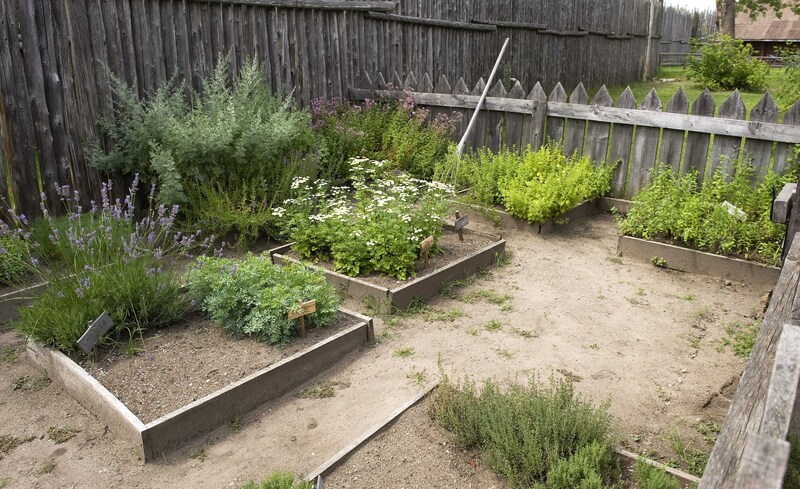Groundwork for a Gorgeous Lawn: Expert Tips for First-Timers
Starting a lawn from scratch is an exciting venture that can transform your outdoor space, boost curb appeal, and create a lush space for relaxation and play. If you're a novice, the process might seem daunting, but don't worry--establishing a beautiful lawn is entirely within your reach with the right know-how. In this comprehensive guide, we'll walk you through expert groundwork tips for creating a stunning lawn, specifically tailored for first-timers.
Why Proper Groundwork is Essential for a Beautiful Lawn
A thriving, green yard doesn't develop by chance; it requires careful planning and thorough preparation. Groundwork--the foundational steps taken before planting--is critical. Skipping this phase can lead to ongoing issues with weeds, poor growth, bare spots, and even pest invasions.
Here's why expert groundwork is crucial for lawn success:
- Ensures proper soil structure and fertility
- Promotes healthy root growth and grass establishment
- Reduces weed infestations and pest problems
- Improves drainage and prevents waterlogging
- Sets the stage for easier ongoing maintenance

Step-by-Step Groundwork Guide for a Gorgeous Lawn
Ready to learn professional tips for creating the lawn of your dreams? Here's what every first-timer should know.
1. Evaluate Your Site and Set Goals
Start by evaluating your outdoor area. Is it mostly sunny or shaded? What's the soil type--clay, silt, sand, or a mix? Are there problem spots (low-lying, rocky, heavily compacted)? Take note of slopes, drainage patterns, existing plants, and sunlight exposure.
Set realistic lawn goals:
- Do you want a low-maintenance grass or a manicured showpiece?
- Will your lawn withstand heavy foot traffic from kids or pets?
- Is water conservation a priority in your area?
Tip: Use these insights to choose the right grass type and inform your preparation methods.
2. Test and Amend Your Soil
A lush lawn starts with healthy soil. Purchase a basic soil test kit or contact your local extension service for a comprehensive analysis. Testing reveals your soil's pH, nutrient content, and organic matter levels.
Most grasses thrive in soil with a pH between 6.0 and 7.0. If yours is outside this range, amend accordingly:
- Acidic soil (low pH): Add lime.
- Alkaline soil (high pH): Add sulfur or peat moss.
Correct deficiencies by mixing in compost, well-rotted manure, or slow-release fertilizers as recommended. This investment pays dividends by promoting strong, dense grass growth.
3. Clear the Area
Clear away existing vegetation, rocks, sticks, and debris. If you're replacing an old lawn, kill persistent weeds and grass with a non-selective herbicide (follow label directions), or use solarization (covering the area with clear plastic for several weeks in hot weather). Remove dead plant material to expose bare soil.
Don't overlook:
- Stubborn perennial weeds - dig out roots completely
- Hidden construction debris or old tree roots
- Low-lying areas that may retain water
4. Address Drainage Issues
Proper lawn drainage is essential for preventing grass diseases and root rot. Identify problem areas that remain soggy after rain. Solutions include:
- Raising low spots with additional soil
- Amending clay-heavy soils with sand and organic matter to improve permeability
- Installing French drains or perforated drainage pipes, if necessary
5. Grading and Smoothing
Smooth, gently angled surfaces (away from buildings) prevent puddling and keep water from seeping towards foundations. Use a rake, shovel, and landscaping tools to grade the area. Remove high spots and fill in dips for a uniform surface.
Checklist for grading:
- Slope soil away from buildings at a drop of about 2-3% (roughly a 1/4-inch per foot)
- Use a straightedge or string line to check for levelness
- Break up large clumps and remove stones bigger than a golf ball
6. Loosening and Conditioning the Soil
Grass roots need loose, aerated soil to thrive. Till or loosen the top 4-6 inches of soil. Mix in any soil amendments as you work. If you have heavy clay or compacted ground, double the effort--a rototiller, broadfork, or spade are great tools.
Add organic matter to boost soil health:
- Compost
- Leaf mold
- Well-rotted manure
7. Final Smoothing and Firming
After tilling and amending, rake the surface until smooth. Lightly firm the soil with a lawn roller (half-filled with water for gentle tamping) or by walking over it in overlapping steps. Aim for a firm but not compacted seedbed--your footprints should just barely show.
How to Choose the Right Grass for Your Lawn
The variety of lawn grass you choose determines its look, feel, and maintenance needs. Factors to consider:
- Climate: Cool-season grasses (like fescue, Kentucky bluegrass) excel in northern zones. Warm-season types (Bermuda, Zoysia, St. Augustine) are suited for southern climates.
- Sunlight: Some varieties thrive in full sun, others tolerate shade.
- Foot traffic: Families and pet owners need durable, fast-recovering species like ryegrass or Bermuda.
- Water needs: Drought-tolerant species reduce irrigation demand.
Tip: Check with your local garden center for grass seed mixes tailored to your region's climate and soil.
Sowing Seed vs. Laying Sod: Pros and Cons
First-timers often face a key decision: Should you plant grass seed or lay sod? Each method has benefits and drawbacks.
| Grass Seed | Sod |
|---|---|
|
|
Planting Your Lawn: Seed, Sod, or Plugs
Planting Grass Seed
Steps for Success:
- Spread starter fertilizer (if soil test recommends).
- Use a broadcast spreader for even distribution.
- Lightly rake soil to cover seeds 1/8 to 1/4 inch deep.
- Roll gently for good seed-to-soil contact.
- Mulch lightly with a weed-free straw or specialized mulch to retain moisture.
- Water daily until germination, then gradually reduce frequency as grass develops.
Laying Sod
Steps for Laying Sod:
- Lay sod pieces in a brickwork pattern, butt edges tightly together
- Press down seams to eliminate air pockets
- Water immediately after installation until the soil is soaked 6 inches deep
- Keep well-watered for 2-3 weeks while roots establish
Installing Plugs or Sprigs
These are small sections of living turf--you'll need to plant them in a grid pattern, watering often until the grass spreads to fill gaps.
Essential Aftercare Tips for a Thriving Lawn
The First Few Weeks
Baby your new lawn for the best results! Here's how:
- Keep soil consistently moist, but not soggy. Water lightly and often at first, then taper.
- Minimize foot traffic during establishment.
- Watch for weeds and remove them before they go to seed.
First Mowing
Mow when the grass blades reach 3-4 inches in height. Never remove more than one-third of the grass height in a single mowing. Keep blades sharp to avoid tearing young shoots.
Feeding and Ongoing Maintenance
Common Mistakes to Avoid When Starting a Lawn
Establishing a gorgeous, long-lasting lawn is simpler when you sidestep these beginner blunders:
- Skipping the crucial soil test phase
- Insufficient soil preparation--especially failure to loosen compacted ground
- Overlooking drainage, leading to soggy, unhealthy turf
- Choosing the wrong grass for your conditions
- Underwatering or drowning young grass
- Mowing too soon or removing too much height at once
- Ignoring early weed outbreaks
Extra Tips from the Pros
Ready to truly impress the neighbors? Consider these advanced expert touches:
- Install edging to define lawn borders and reduce weedy encroachment.
- Add microclover seed to improve drought tolerance, crowd out weeds, and fix nitrogen.
- Embrace grasscycling--leave grass clippings to decompose and feed your soil naturally.
- Mulch mow in autumn, turning leaves into soil-boosting mulch.
Myths About Growing a Beautiful Lawn--Busted!
- Myth: New lawns don't need much attention. Truth: The establishment phase is the most critical for long-term success.
- Myth: All grass is the same. Truth: Grass species and blends greatly vary in looks, durability, and care requirements.
- Myth: More water and fertilizer equal better results. Truth: Overdoing inputs leads to weak roots, disease, and run-off pollution.

Conclusion: You Can Cultivate a Gorgeous Lawn!
Establishing your first lawn may seem like a tall order, but with sound groundwork preparation and a bit of patience, you'll be rewarded with a healthy, picture-perfect turf that lasts for years. Remember to test and amend your soil, choose the right grass, prepare your seedbed with care, and nurture your young lawn until it matures.
With these lawn groundwork tips for beginners and expert advice, your goal of a beautiful yard is closer than ever. So grab your gloves, sharpen your tools, and get ready to grow a stunning lawn--right from the ground up!
Frequently Asked Questions About Lawn Groundwork
How long does it take to establish a new lawn?
Grass seed lawns usually require 4-8 weeks to germinate and fill in, depending on the grass type and season. Sod, meanwhile, offers near-instant greenery but still takes 2-3 weeks for roots to anchor and become walkable.
Can I start a lawn in summer?
While possible, summer heat and drought make establishment harder. Spring or early fall is preferred, especially for cool-season grasses.
What if I have heavy clay or sandy soil?
Amend clay soil with organic matter (compost, well-rotted manure) and sharp sand to improve drainage and texture. Sandy slips benefit from added compost or peat to boost moisture retention.
How often should I fertilize my lawn?
Fertilize according to your grass type and local extension service recommendations. Most new lawns benefit from a starter fertilizer at planting, then seasonal feedings after establishment.
Is a sprinkler system necessary?
Not required, but a timer-controlled sprinkler or soaker hoses help maintain consistent moisture, which is vital during establishment.
Now that you're equipped with these expert lawn groundwork tips, you're well on your way to cultivating a lush, green, enviable yard--even as a first-timer!